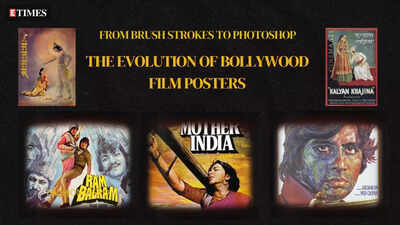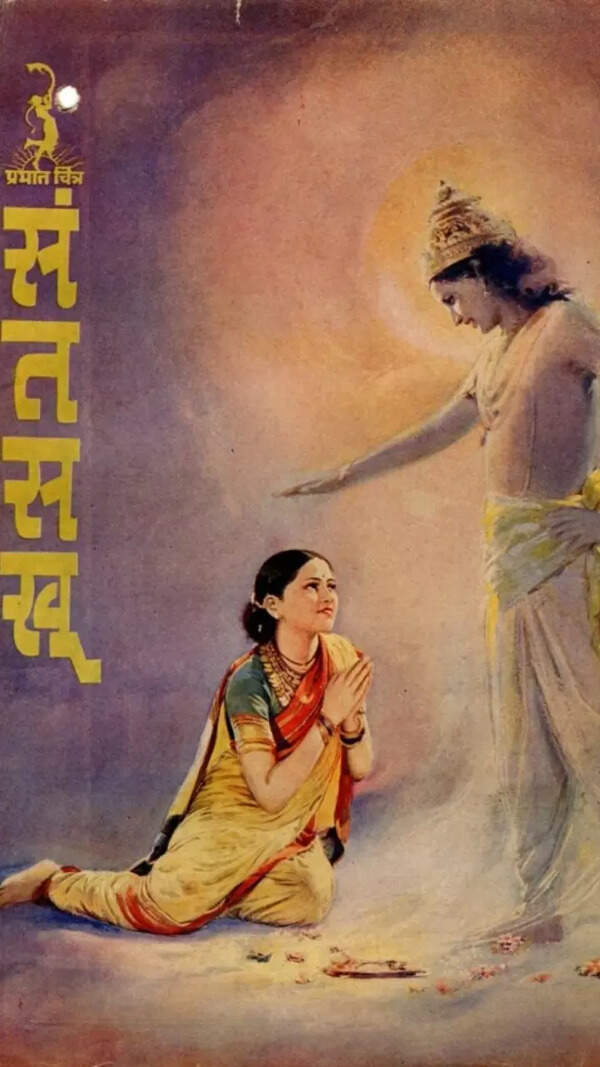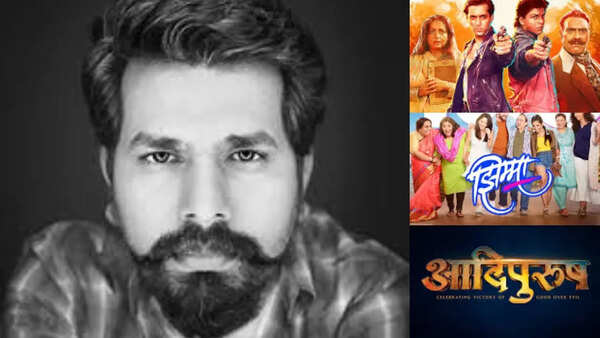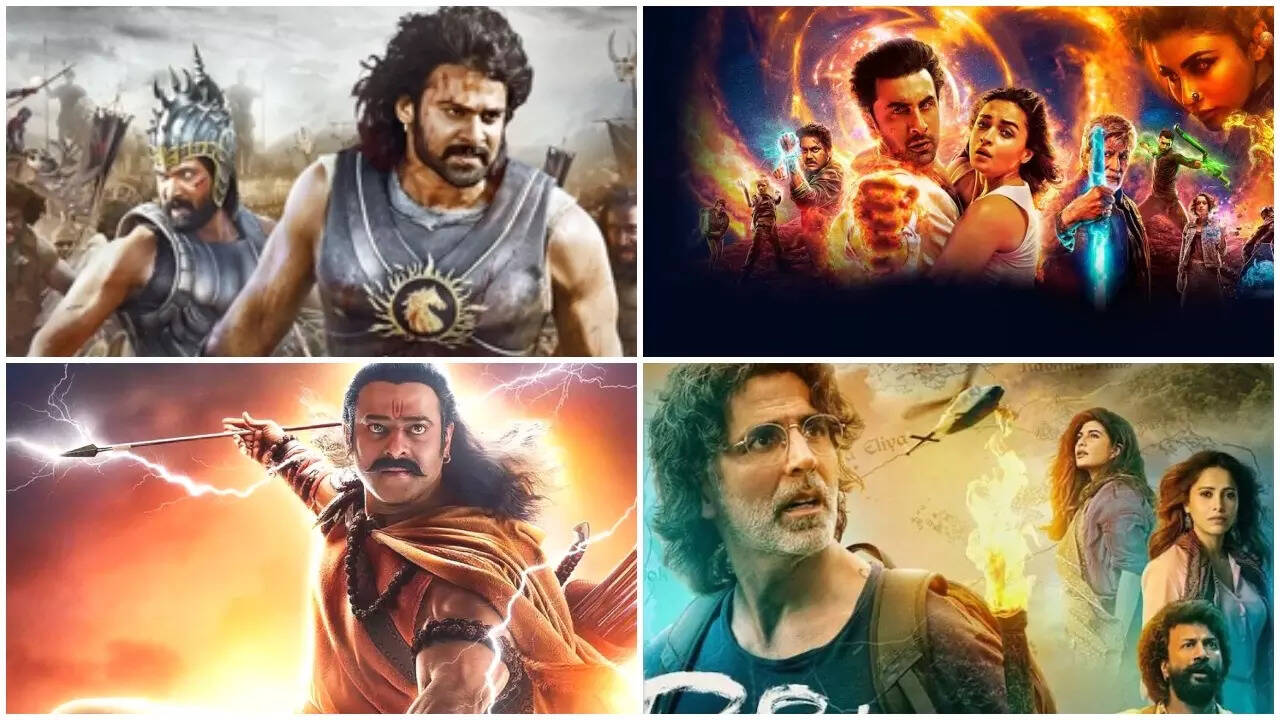
Long before Indian films embraced digital gloss and photo-editing precision, its visual identity was painted—literally.
Film posters
weren’t just promotional tools; they were standalone works of art. Painted in bold hues, they adorned city walls, billboards, and cinema facades, inviting passersby into worlds of romance, revolution, action, and fantasy.This is the story of how Bollywood film posters transformed over the decades—from handmade brushstrokes to computer-generated designs—and why the legacy of the hand-painted poster deserves to be remembered, restored, and revered.The Origins: India’s First Cinematic CanvasesOne of India’s earliest surviving film posters is believed to be for
Kalyan Khajina
(1924), a Marathi historical based on the life of Shivaji Maharaj. Directed—and likely designed—by Baburao Painter, it featured a dramatic image of the Maratha warrior discovering a hidden figure in a treasure chest. Some experts, including The Art of Bollywood author Rajesh Devraj, date this poster to around 1927, but its artistic merit remains timeless.

Even before cinema found its footing, India’s most iconic painter,
Raja Ravi Varma
, laid the groundwork for mass visual storytelling. In 1890, he established a lithographic press to make art accessible to the masses—prints that featured mythological themes and gods, which would go on to influence early film posters. Dadasaheb Phalke, the father of Indian cinema, briefly worked with Ravi Varma’s press before founding his own studio and eventually pioneering India’s first feature film.
The Golden Age of Painted Posters (1940s–1980s)
As cinema grew in reach and popularity, so did the art of the poster. With the arrival of sound in film, the 1940s saw the rise of hand-painted visuals as the dominant form of film publicity. In 1941, Sant Tukaram featured a striking poster by Ravi Verma (not to be confused with Raja Ravi Varma), combining devotional themes with human emotion—a blueprint for much of early Indian poster art.

From the 1940s through the 1980s,
painted posters
became Bollywood’s visual signature. These designs were marked by vivid colors, exaggerated facial expressions, dynamic poses, and larger-than-life emotions. Artists often worked from stills or simply a narration of the film’s theme, relying on their imagination to bring characters to life.Sachin Suresh Gurav, one of the most respected poster designers in contemporary Indian cinema, carries forward a legacy deeply rooted in the visual storytelling traditions of Bollywood. His creative contributions span a wide array of films—from Queen and Radhe to Hotel Mumbai and The Tashkent Files. Speaking about the transition in film poster aesthetics over the decades, he offered a thoughtful reflection on the evolution of this unique art form:“In the 1920s and ’30s, Indian film posters had a beautiful Art Deco influence. The designs were elegant and visually rich, reflecting global design movements while retaining local flavors.During the 1940s and ’50s—the pre- and post-Independence era—posters reflected the national sentiment. These were more revolutionary in tone, often showcasing the male actor’s face prominently, with smaller representations of female leads. It was an era of hope, change, and patriotic symbolism.As we entered the 1960s, romance and escapism took over. Films like Love in Tokyo marked a new wave of cinematic expression. People began traveling abroad and bringing global aesthetics back to Indian poster design.The 1970s saw a shift in Bombay’s cultural landscape. Posters from this era had a ‘macho’ appeal—dynamic, cluttered, and packed with visual detail. They aimed to tell the whole story in a single frame.

By the 1980s and ’90s, photography began replacing painted imagery. The ‘angry young man’ era emerged, and still photography became the base for posters. Though film, music, and even poster copying existed then, the absence of social media meant no one really noticed.After the mid-’90s, we saw the rise of computer-generated imagery. By 2010, the celluloid era ended, and digital filmmaking and poster design fully took over. Technology improved—high-end cameras, advanced lighting, and software changed everything. Hollywood’s influence grew stronger too.But one thing I always say—as long as posters were hand-painted, originality was sacred. There was no copying. Every poster was an artist’s pure vision. Designing a film poster isn’t easy; it takes observation, emotion, and imagination. When I create, I keep my eyes open to the world around me, looking for minute details that can translate into unforgettable visuals. A good poster should not just sell the film—it should become part of cinema history.”
Iconic Posters That Defined an Era
Some painted posters have transcended time to become part of India’s visual and cinematic heritage:
- Mother India (1957) – Painted by B.M. Gupta, this poster channeled Soviet influences with Indian iconography, casting Nargis as the face of endurance and maternal strength.
- Mughal-e-Azam (1960) – B. Vishwanath’s regal design reflected the film’s grandeur and timeless romance.
- Guide (1965) – A soft, evocative portrayal of Dev Anand and Waheeda Rehman captured the film’s poetic soul.
- Sholay (1975) – A high-voltage explosion of drama, color, and fury, it distilled the film’s intensity into a single frame.
- Pakeezah (1972) – Another B.M. Gupta gem, this haunting portrait of Meena Kumari remains a permanent exhibit at Mumbai’s Film Museum.

Studios and Artists That Shaped a Visual Language
Behind these masterpieces stood legendary studios and visionary artists:
- Studio Mohan, run by C. Mohan, became a hub for iconic visuals.
- Pamart Studio, headed by B.S. Sarwate, was known for massive, multi-panel posters.
- R.K. Studios, under Raj Kapoor, treated poster design as an extension of the film’s storytelling—Awara’s (1951) poster remains iconic.
Artists like Ram Kumar Sharma, Diwakar Karkare (of Satyam Shivam Sundaram fame), and Shrikant Dhongade brought depth and drama to Bollywood’s painted past, each treating the canvas as cinema itself.Milind Mathkar, who has designed posters for many Marathi films such as 'Gadad Andhar', 'Bedhadak', 'Fatwa', and 'Sur Sapata', shared his thoughts in an exclusive conversation with ETimes:"Poster designing is a very crucial aspect of filmmaking, but unfortunately, it is not given the importance it deserves. If a film does well, it means that every department has worked hard and contributed their efforts.When we create a poster, the filmmaker considers several aspects—what the film is about, whether it has an ensemble cast, the era it is set in, and its genre. The poster is the first glimpse the audience gets before even the trailer is released. It has the power to attract viewers to the film—it's the first step in any kind of promotion.

Earlier, when there was no social media, people depended on posters to know what a film was about, who starred in it, and whether they wanted to watch it. Poster-making is a deep and nuanced art form, and no AI-generated artwork can replace it, because a poster carries the soul of its creator.We’ve had many incredible painters and poster designers in our industry and around the world whose work has been celebrated by audiences. Names like M.F. Husain still echo in the world of art.Poster-making is a vital part of cinema, and we must preserve it. Only an artist can truly convey the beauty of creating a masterpiece—the brush, the smell of the colours, and the intention behind crafting something beautiful on canvas. It’s an outstanding feeling, one that cannot be captured in words."
Why Painted Posters Mattered
In an era without trailers, teasers, or social media, posters were often a viewer’s first encounter with a film. They shaped expectations, built buzz, and helped turn newcomers into stars. For many artists, poster design was a form of storytelling—an interpretive art that conveyed emotion, scale, and tone.Each brushstroke carried intention. The imperfection of the human hand gave these posters character and charm. The gaze of Nargis in Mother India or Amitabh Bachchan’s silhouette in Deewaar—these were not just visuals, they were cultural imprints.

 1 month ago
90
1 month ago
90




























 English (US)
English (US)